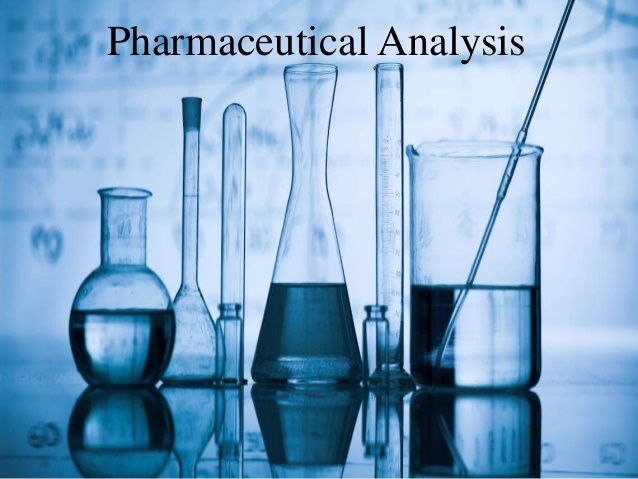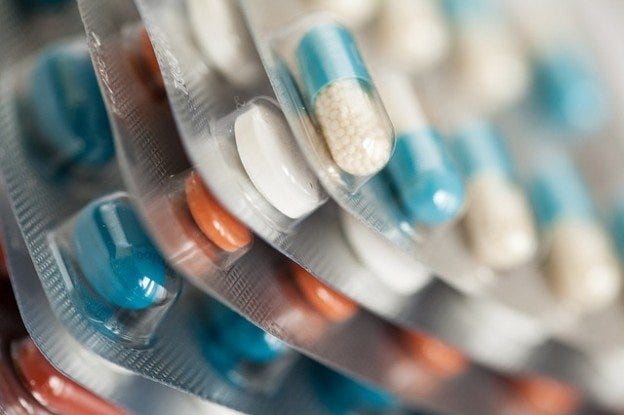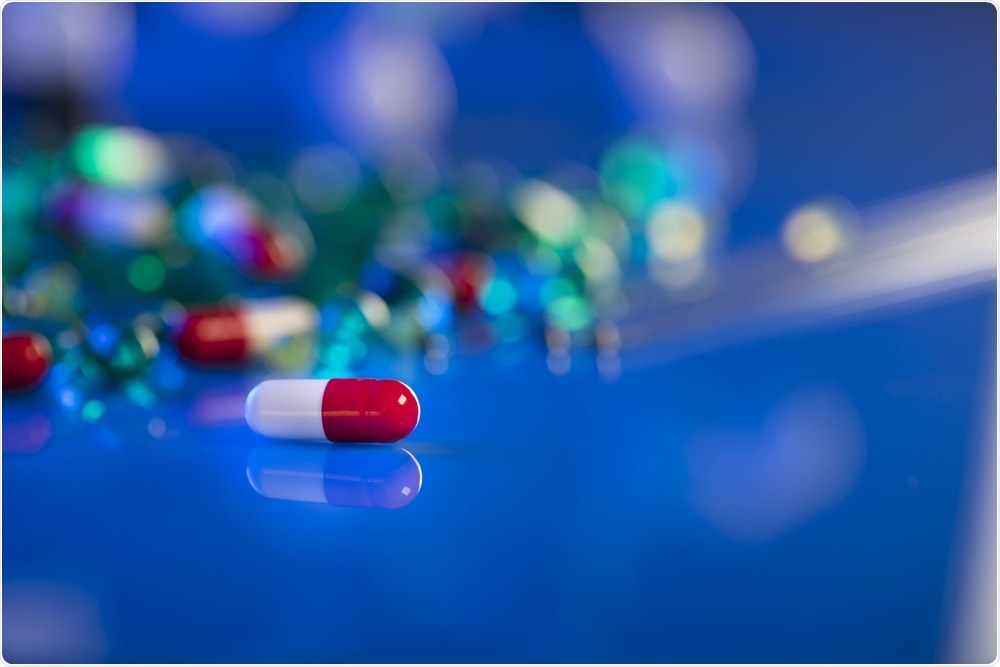Pharmaceutical Analysis
Pharmaceutical analysis/edited by David C. Lee and Michael L. Includes bibliographical references and index. ISBN 1–84127–335–X (hb) 1. The use of analytical sciences in the discovery, development and manufacture of pharmaceuticals is wide-ranging. From the analysis of minute amounts of complex biological materials to the. Applying concepts to a range of workplace settings such as forensic, environmental, clinical, and pharmaceutical laboratories. Course Goal A range of analytical techniques have been introduced and refined over the past decades and many are now commonly used in routine analysis of various samples including biological and chemical specimen.
INTRODUCTION
Pharmaceutical analysis is a branch of practical chemistry that involves a series of process for identification, determination, quantification and purification of a substance, separation of the components of a solution or mixture, or determination of structure of chemical compounds.
The substance may be a single compound or a mixture of compounds and it may be in any of the dosage form. The substance used as pharmaceuticals are animals, plants, micro organisms, minerals and various synthetic products.
The sample to be analysed is called as analyse and on the basis of size of sample, they can be classified as macro(0.1 g or more), semi micro (0.01 g to 0.1 g), micro(0.001 g to 0.01 g), sub micro (0.0001 g to 0.001 g), ultramicro (below 10-4 g), trace analysis(100 to 10000 ppm). Among all, the semi micro analysis is widely used.
[adsense:336x280:8701650588]
TYPES
There are main two types of chemical analysis.
1. Qualitative (identification)
2. Quantitative (estimation)

1. Qualitative analysis is performed to establish composition of natural/synthetic substances. These tests are performed to indicate whether the substance or compound is present in the sample or not. Various qualitative tests are detection of evolved gas, formation of precipitates, limit tests, colour change reactions, melting point and boiling point test etc.
2. Quantitative analytical techniques are mainly used to quantify any compound or substance in the sample. These techniques are based in (a) the quantitative performance of suitable chemical reaction and either measuring the amount of reagent added to complete the reaction or measuring the amount of reaction product obtained, (b) the charatristic movement of a substance through a defined medium under controlled conditions, (c) electrical measurement, (d) measurement of some spectroscopic properties of the compound.
Various types of Qualitative analysis:
1.Chemical methods
a) volumetric or titrimetric methods
b) gravimetric methods
c) gasometric analysis
2.Electrical methods
3.Instrumental methods
4.Biological and microbiological
Table of content:
| Absorption Spectroscopy (UV, Visible) |
| IR Spectroscopy |
| --- |
1.Chemical methods
a)Titrimetric or volumetric method
It involves reaction of substance to be determined with an appropriate reagent as a standard solution, and volume of solution required to complete the reaction is determined. Volumetric methods require simple and less apparatus and they are susceptible of high accuracy.
Various types of titrimetric methods are:
i)Acid-base titrations (neutralization reactions)
ii)Complexometric titrations
iii)Precipitation titrations
iv)Oxidation reduction titrations
v)Non aqueous titrations
b)Gravimetric methods
In gravimetric analysis, a substance to be determined is converted into an insoluble precipitate in the purest form, which is then collected and weighed. It is the time consuming process.
In electrogravimetry, electrolysis of the sample is carried out on the electrodes is weighed after drying.
Thermogravimetry (TG) records the change in weight, differential thermal analysis (DTA) records the difference in temperature between test substance and an inert reference material, differential scanning calorimetry (DSC) records the energy needed to establish a zero temperature difference between a test substance and reference material.
c)Gasometric analysis
Gasometry involves measurement of the volume of gas evolved or absorbed in a chemical reaction.
Some of the gases which are analysed by Gasometry are CO2 , N2O,cyclopropane, amyl nitrate, ethylene, N2, helium etc.
2.Electrical methods
Electrical methods of analysis involve the measurement of electric current, voltage or resistance in relation to the concentration of some species in the solution.
Electrical methods of analysis include:
(a)Potentiometry
(b)Conductometry
(c)Polarography
(d)Voltametry
(e)Amperometry
Potentiometry measures electrical potential of an electrode in equilibrium with an ion to be determined. Conductometry measures electrical conductivity of an electrode with a reference electrode while Polarography, Voltametry and Amperometry measures electrical current at a micro-electrode.
3.Instrumental methods of analysis
Instrumental method involves measurement of some physical properties of the compound or a substance. These methods are employed for determination of minor or trace concentration of element in the sample.
Instrumental methods are preferred due to their selectivity, high speed, accuracy and simplicity of analysis. Any change in the properties of the system are detected by measurement of absorbance, specific rotation, refractive index, migration difference, charge to mass ratio etc.
Spectroscopic methods of analysis depend upon measurement of the amount of radiant energy of a particular wavelength emitted by the sample.
Methods which include absorption of radiation are ultra violet, visible, infra red, atomic absorption, nuclear magnetic resonance spectroscopy etc.
Emission methods involve heating or electrical treatment of the sample so that the atoms are raised to the excited state to emit the energy and the intensity of this energy is measured. Emission methods include emission spectroscopy, flame photometry, flourimetry etc.
Chromatographic techniques and electrophoretic methods are separation methods for the mixure of compounds, but also applied for identification of compounds of mixures. Various chromatographic techniques are GC, HPLC, TLC, HPTLC, PC etc.
Mass spectrometry involves vaporization of material using a high vaccum and the vapour is bombarded by a high energy electron beam. Vapour molecules undergo fragmentation to produce ions of varying size. These ions are differentiated by accelerating them in electrical field and then deflecting them in a magnetic field. Each kind of ion gives a peak in the mass spectrum.
4.Biological and microbiological methods
Biological methods are used when potency of a drug or its derivative can not be properly determined by any physical or chemical methods. They are called bio-assays.
Microbiological methods are used to observe potency of antibiotic or anti- microbial agents. In antimicrobial assay, inhibition of growth of bacteria of the sample is compared with that of the standard antibiotic. These methods include cup plate method and turbidimetric analysis.
APPLICATIONS
Manufacturing industries require both qualitative and quantitative analysis to ensure that their raw materials meet certain specifications, and to check the quality of final product. Raw materials are to be checked to ensure that the essential components are present within the predetermined range of composition and there are not any unusual substances present which might upset the manufacturing process or it may appear as a harmful impurity in the final product.
In the development of new products which contains mixtures other then the pure material, it is necessary to ascertain composition of mixture which shows the optimum characteristics for which the material has been developed.
Geographical surveys require analysis to determine the composition of soil sample and numerous rock samples collected from the field.
Most of the industrial processes give rise to pollutants which may cause health related problems. So quantitative analysis of air, water and soil sample should be carried out to determine the level of pollution and to establish the safe limits for pollutants.
PHA 6417 Pharmaceutical Analysis 2
Credits: 3
Description
This course focuses on the characterization and the structural proof of drug compounds routinely encountered in Forensic and Pharmaceutical laboratories. Each module, accompanied by specific aims, will be supplemented with figures, animations, and links to appropriate web sites that will provide the materials necessary for course completion. Grades will be based on performance on the assignments accompanying each module. Students are expected to utilize information presented in each module to develop and complete their module assignments. Other activities will include online discussions of course topics and current issues that relate to pharmaceutical and forensic drug analysis.
This course focuses on core concepts of analytical procedures and the theory of how they work, in particular:

- Choosing an appropriate analytical technique based on chemical and physical properties of a substance or mixture of substances.
- Developing and validating an analytical procedure to extract, separate, and identify substances.
- Distinguishing between extraction, separation, and identification techniques and how they can be combined to provide an optimal and efficient procedure for substance analysis.
- Applying concepts to a range of workplace settings such as forensic, environmental, clinical, and pharmaceutical laboratories.

Course Goal
A range of analytical techniques have been introduced and refined over the past decades and many are now commonly used in routine analysis of various samples including biological and chemical specimen. Bench scientists require an understanding of the theory behind these techniques to not only perform the necessary tasks but also develop and troubleshot emerging issues. Making decisions about which procedure to use, which separation conditions to select, and how to interpret data, assist in developing skills that are valuable and essential to the analytical laboratory environment. At the completion of the course, students will be able to explain how commonly used analytical techniques work and select the best methods to conduct the analysis of a range of sample specimens.

Prerequisites
Please review our recommended course order.
Topics
| Module | Topic |
|---|---|
| Module 1 | Sample Handling, Storage and Preparation |
| Module 2 | Presumptive Tests |
| Module 3 | Ultraviolet Spectrophotometry |
| Module 4 | Infared Spectrophotometry |
| Module 5 | Nuclear Magnetic Resonance (includes virtual lab) |
| Module 6 | Mass Spectroscopy |
| Module 7 | Gas Chromatography |
| Module 8 | High Performance Liquid Chromatography (includes virtual lab) |
| Module 9 | Capillary Electrophoresis |
| Module 10 | Supercritical Fluid Separations |
| Module 11 | Trace analysis |
| Module 12 | Optimization of Experimental Conditions |
| Module 13 | Legal Implications and Data Interpretation |
Course Structure
Group discussion forums, online chat sessions, interactive animations, virtual labs for select topics, and individual e-mail contact between student and instructor. Students will be required to submit written essay assignments. The instructor will also be frequently available for one-on-one virtual office hours.
Virtual laboratories
Together with Labster we are now able to offer select virtual laboratories to our students. This allows students to explore analytical procedures and techniques in a simulated laboratory, conduct actual experiments by changing experimental conditions, and challenge themselves to engage both with the theory as well as practical aspects of analytical techniques.

High Performance Liquid Chromatography Virtual Lab introduction video
Pharmaceutical Analysis Journals
Required Materials:
No Textbooks are required for this class.
Library Access
Pharmaceutical Analysis David G. Watson Pdf
Distance Education and UF Online Students enjoy the same library privileges as on-campus students.
To utilize the University of Florida Library System, click here!
